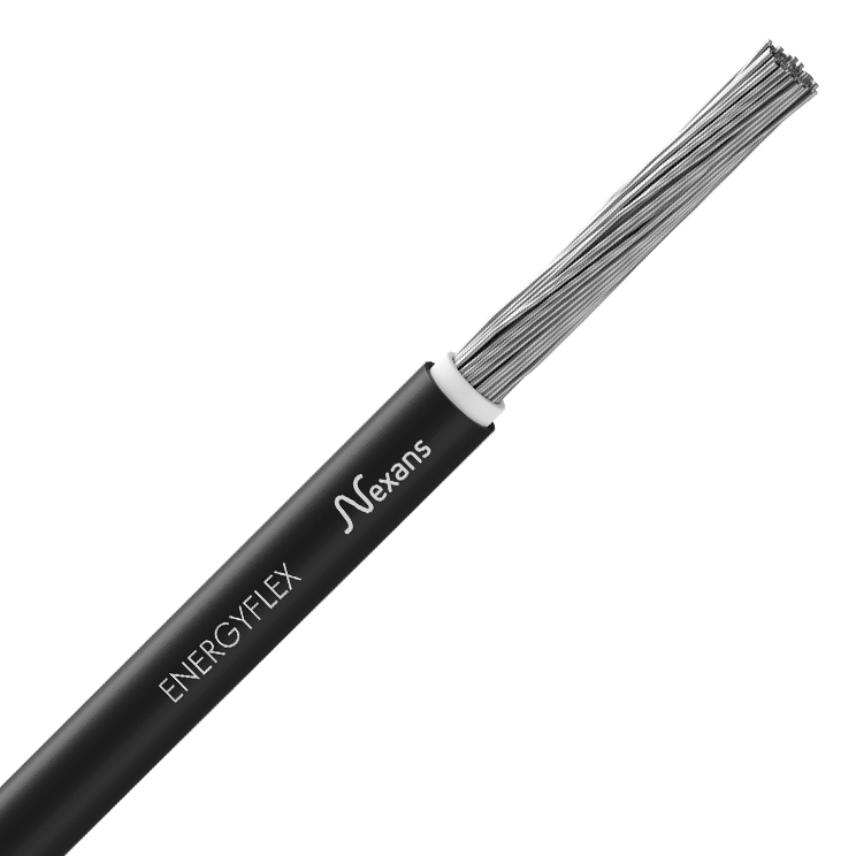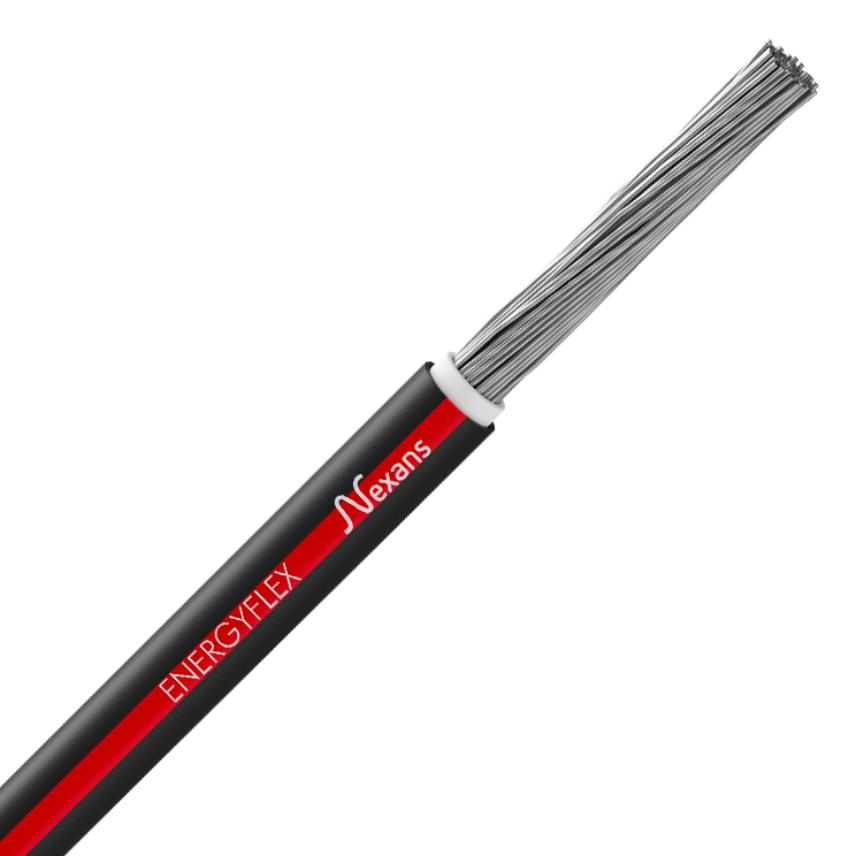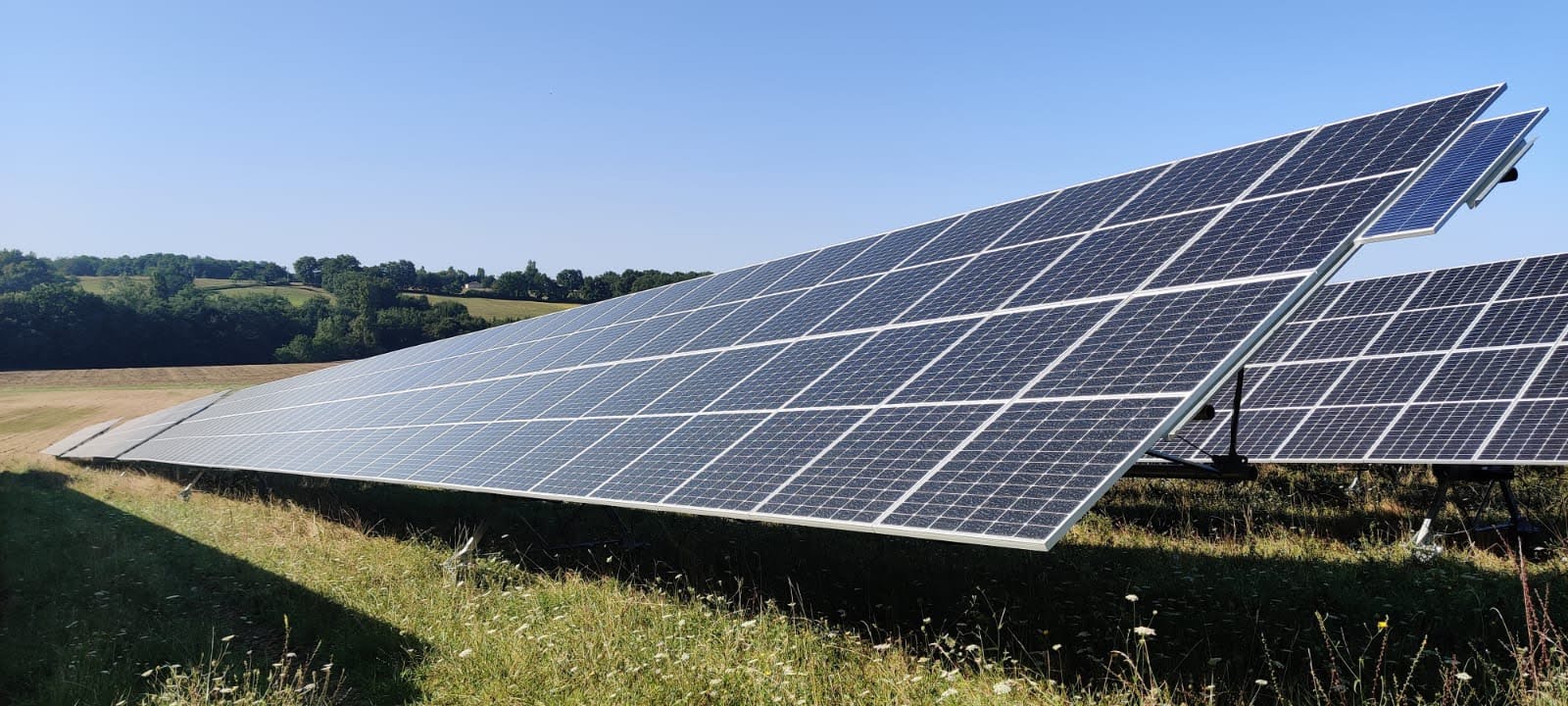-
Produktkatalog
- Produktkatalog
- Brandsäkra kablar
- Kraftkablar 1-145 kV
- Elinstallation
- Fördragna installationskablar i rör
-
Anslutningskablar
- Översikt
- TITANEX® H07RN-F 450/750 V
- H03V2V2-F (RKK 90) 300/300 V
- H03VVH2-F (SKX-U) 300/300 V
- H05V2V2-F (RKK-S 90GR) 300/500 V
- H05VVH2-F (RKX) 300/500 V
- H05VV-F (RKK) 300/500 V
- H03V2V2H2-F (SKX-U 90GR) 300/300 V
- H03VV-F (SKK) 300/300 V
- PUREAX (H07BQ-F)
- RKX 90
- S03Z1Z1H2-F (SQX) 300/300 V
- H05Z1Z1-F (RQQ) 300/500 V
- Slingkabel H05Z1-K (RQ) FT 300/500 V
- NOAC-E HFFR 300/500 V (S05Z1A7Z1-F)
- Tele - data - säkerhet
- Industrikablar
- Tillbehör
- Segment
- Nyheter
- Support och tjänster
- Vi är Nexans
- Hållbarhet på Nexans
- Sök
- Kontakta oss
- Jämför
- Logga in
ENERGYFLEX 1X6 - SVART/RÖD


ENERGYFLEX 1X6 - SVART/RÖD
ENERGYFLEX
Energyflex används i solcellsanläggningens likströmssida (DC) med en nominell likspänning på 1,4 kV. Energyflex solcellskablar är lämpliga för långvarig användning utomhus under varierande och hårda klimatförhållanden. De är konstruerade och testade för att arbeta vid en ledningstemperatur på 90 ° C och under 20 000 timmar upp till 120 ° C.
Kabeln är godkänd enligt TÜV 2 PFG 1169/08.2007 Certifikat R60041137
Läs mer- Artikelnr. : 20056198-927-05
- E-nr. : 0505335
- EAN : 3427640026318
Beskrivning
Beskrivning
Standarder
-
ProduktEN 50618; IEC 62930
Applikation
ENERGYFLEX® är en halogenfri kabel som används i fasta installationer för solcellspaneler på hustak eller i solcellsfält. Den kan även användas för att ansluta växelriktare/inverters. Avsedd för fast installation utomhus och inomhus.
ENERGYFLEX® är beständig mot extrema temperaturer (-40 °C till +120 °C), ozon och UV. Kabeln uppfyller brandklass enligt CPR Dca s2 d2 a1.
Konstruktion
1. Ledare:
- Mångtrådiga ledare (klass 5) av förtent koppar med resistans enligt IEC 60228.
2. Isolering:
- Halogenfri polyolefin.
3. Yttermantel:
- Halogenfri polyolefin.
- Två versioner: svart mantel och svart mantel med röd rand
(svart mantel med blå rand på begäran)
Parterna är vita.
Märkning
ENERGYFLEX® PV1-F PV1000-F 1x s mm² 0.6/1kV Nexans 269 Photovoltaic
Märkning FG21M21 (IMQ) på begäran.
Current rating temperature
Ambient temperature = 60°C
Maximum conductor temperature = 120°C
TECHNICAL INFORMATION (1/3)
|
Peroxide Crosslinked Material |
Halogen Free Material |
|
Cable insulation and jacket are both based on crosslinked polymers. Crosslinking is performed using peroxide technology. It means that the polymer macromolecular chains are physically bound by chemical links. The peroxide crosslinking is one of the most efficient ways to crosslink because it allows a crosslinking on a melt polymer, leading to a homogeneous network and a high density of links among the material thickness.
Advantages
Fig: The peroxide molecule decomposition leads to the formation of chemical bonds between polymer chains. After crosslinking, a three-dimensional network is obtained. The polymer chains are no more capable to slip among themselves and an infusible material is obtained with improved properties. |
Halogen based materials are widely used in cable industry with PVC and flame retardant additives. Halogens are a specific family of chemical elements: Fluorine (F), Chlorine (Cl), Bromine (Br), Iodine (I), Astatine (At). These elements are well-known to bring high performances regarding fire retardancy. However, they generate during the burning phase a heavy dark smoke with the formation of highly toxic and corrosive gases. Our Energyflex® cables are totally free of these elements.
Halogen content by Ion Chromatography Fig: A piece of material is burned in a tube and the emitted gases are carried and trapped for analysis. For a precise dosage of these different halogen elements, ion chromatography allows to separate these elements and to quantify accurately the amount of each species.
Corrosivity of smoke Fig: As seen before, a piece of material is burned and the gases are trapped in a liquid solution to measure the corrosivity of smoke. The pH and conductivity are measured and should be higher than respectively 4.3 and 10 µS/mm. |
TECHNICAL INFORMATION (2/3)
|
Long Term Thermal Endurance |
Sunlight Resistance |
|
The cable ageing under thermal oxidation leads to the degradation of the polymer material. To predict or at least to estimate what could be the lifetime of a material under thermal ageing, one uses the Arrhenius procedure depicted in the IEC 60216-1 to 4. The main principle is to age the material at high temperatures and then, using the Arrhenius law, to estimate/predict the lifetime at operating temperature (120 or 90°C).
Arrhenius plot Ageing was performed at 4 different temperatures: 135°C, 150°C, 165°C and 180°C. The line (linear plot) allows to predict the lifetime at 120 and 90°C. The red dots represent the main targets we are looking for, i.e. the 20000h@120°C, 25years@90°C and 40years@90°C. The more the extrapolated line is above the red dots, the more the lifetime is higher than the target. The obtained extrapolation is well above the targets and thus the estimated lifetime is bigger than 40years@90°C. ##image:101760:center## Fig: Arrhenius plot of the insulation material. The criterion to determine the time to failure is chosen as a loss of 50% of the initial elongation at break. At this stage, the cable has initiated it degradation but it is not fully degraded. |
One of the main causes of material ageing regarding photovoltaic application is the exposure to UV (Ultra-Violet) light, also called photo-degradation. The cable ageing under UV light is due to the combination of the temperature and UV irradiation (harmful UV irradiation is mainly between wavelengths 300 and 400 nm on the earth surface).
Accelerated ageing Our jacketing material presents no degradation after 1 month of weathering acc. to the EN 50289-4-17 method A. ##image:101761:center## Fig: The Xenon lamp generates a spectrum close to the sunlight one. The samples are placed facing the lamp and are submitted to a specific irradiance and temperature to accelerate the UV ageing.
Beyond the standard ##image:101762:center## Fig: Here in our Nexans process, we exceed the test conditions of the EN (4000hours against 720h and 100W/m² against 43W/m² specified) and we see no change of the mechanical features. |
TECHNICAL INFORMATION (3/3)
|
Dynamic Mechanical Performances |
Fire/Flame Retardancy |
|
No dynamic mechanical tests are found in the EN 50618 standard because the cables are intended to be used without any dynamic constraints. As Energyflex® could be used for Tracker systems, we have performed additional tests:
Dynamic behaviour Dynamic/cyclic mechanical constraints lead to the conductor degradation (copper/aluminium braid degradation). In our case, the cable present very good dynamic properties and still transmit current after 100 000 cycles in both torsion and bending. ##image:101765:center## Fig: Torsion cycles: 50N ± 135° 100°/s ##image:101766:center## Fig: Reverse bending: 100N ± 45° 160°/s |
Energyflex® cables are HFFR, i.e. Halogen Free Fire Retardant cables. The material is free of halogen and is capable to withstand a flame retardant test according to the EN 60332-1-2. It means that the cable presents a good resistance regarding the flame spread with a very good self-extinguishing behavior.
Resistance to flame test The cable passes the EN 60332-1-2 where 600mm of cable are tested vertically. The flame is applied with a 45° angle and a 1kW burner. ##image:101767:center## Fig: Picture of the flame test acc. to EN 60332-1. The flame is applied 1 to 8 minutes depending on the cable diameter. The test is compliant if after the flame application, the flame extinguishes with a burned length comprises between 50 and 540mm. |
PV
Egenskaper
Egenskaper
Konstruktionsegenskaper
Konstruktionsegenskaper
Dimensionsegenskaper
Dimensionsegenskaper
Elektriska egenskaper
Elektriska egenskaper
Mekaniska egenskaper
Mekaniska egenskaper
Hanteringsinformation
Hanteringsinformation
Resurser
Resurser
Dokumentation
Prestandadeklaration (DOP)
- Prestandadeklaration nr. : 1000199-FRAN
- Certifieringsdatum : 2019-12-17
- AVCP (bedömning och fortlöpande kontroll av prestanda) : System 3
- Notifierat organ : NB 1812
- Prestanda : Dca-s2,d2,a1
Våra webbsidor
Väl land för att hitta våra produkter och lösningar
-
Africa
- Africa
- Ghana
- Ivory Coast
- Morocco
- North West Africa
- Americas
- Asia
- Europe
- Oceania
